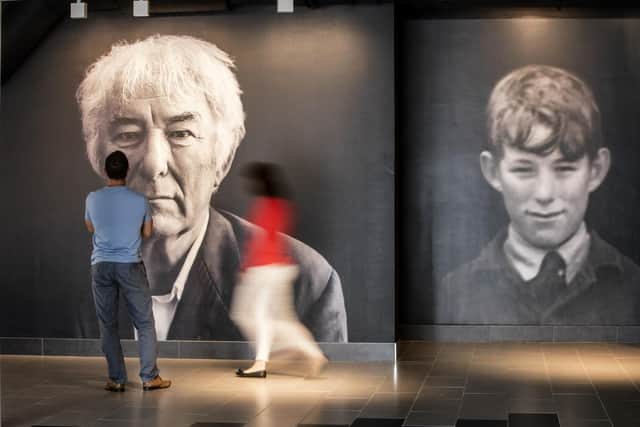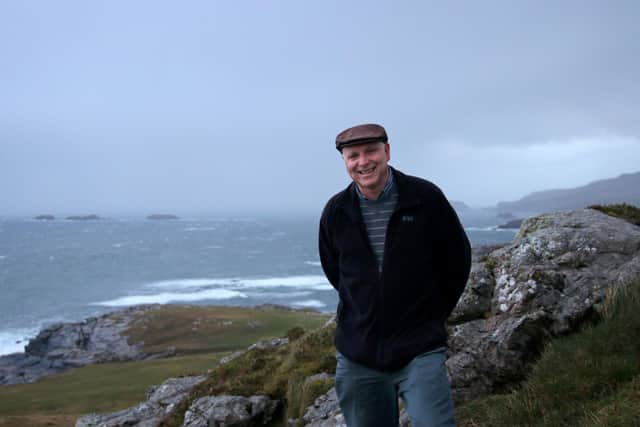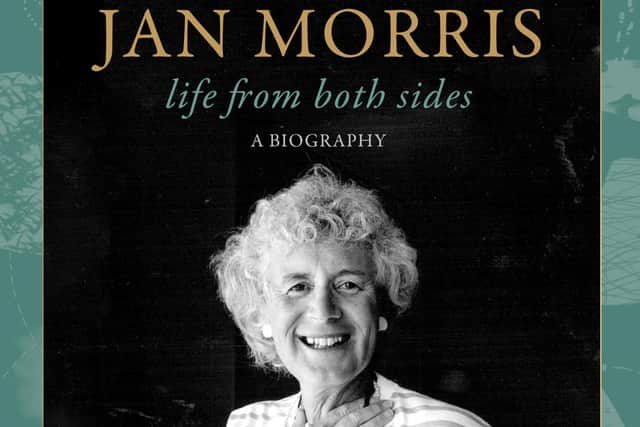Gobbledygook confirmed one of mankind’s greatest feats
and live on Freeview channel 276
Decoded it reads “Summit of Everest reached on May 29 by Hillary and Tenzing.”
It was typed at night, by the light of a hurricane lamp, by Jan Morris, the only journalist on the 1953 Mount Everest expedition. She climbed 22,000 of the peak’s 29,035 feet and dispatched her coded précis next morning by runner to an Indian radio post and thence to London in time for Queen Elizabeth II’s coronation on 2 June 1953. The code guarded against leaks to other newspapers.
Advertisement
Hide AdAdvertisement
Hide AdWith the 70th anniversary of the historic ascent approaching, Morris’s remarkable life story is being told by her biographer Paul Clements, in conversation with writer Tim Hannigan, on Sunday, February 19.


When Morris’s biography was launched last October, Clements’ publicity blurb catalogued her “truly remarkable life.” When she passed away in 2020 she was “one of Britain’s best-loved writers...her work was known for its observational genius, lyricism, and humour...she participated in military service in Italy and the Middle East, before embarking on a career as an internationally fêted foreign correspondent...Morris’s reportage spanned many of the twentieth century’s defining moments...she transitioned genders in the late sixties becoming renowned as a transgender pioneer.”
Published by Scribe, the biography is titled ‘Jan Morris, Life From Both Sides’. Though she was known as James Morris until her 40s the biography uses her chosen pronoun throughout and ditto on Roamer’s page. It is no coincidence that Clements’ talk is in the Seamus Heaney HomePlace in Bellaghy, established to celebrate and commemorate the Bellaghy-born Nobel Laureate.
Heaney’s inspirational publisher and mentor was Charles Monteith from Northern Ireland, who was also Morris’s “longest friend in the literary world and a seminal influence” Clements emphasises in his biography.
Advertisement
Hide AdAdvertisement
Hide AdBorn into a Lisburn drapery family on 9 February 1921, after Inst and Oxford Monteith migrated from law to publishing and rescued William Golding’s ‘Lord of the Flies’ manuscript from Faber & Faber’s bin shortly after becoming an editor in 1953. Soon he was Faber Chairman.


When his first poetry received an acceptance note from Faber, Seamus Heaney wrote, “I just couldn't believe it, it was like getting a letter from God the Father.”
While Monteith was campaigning for Golding in 1953 he was reading Morris’s Everest reports in The Times and was so impressed he asked her to write a book.
For contractual reasons she first had to leave The Times so ‘Coronation Everest’ wasn’t published by Faber until 1958. “If Monteith hadn’t been there,” Clements speculates, “who’d have brought Morris to prominence, and Heaney and (Ted) Hughes and all the rest of them?”
Advertisement
Hide AdAdvertisement
Hide AdThe Morris biography is big! “It’s rather large!” Paul agrees, adding: “Although it’s 600 pages, the actual book is only 485 pages because all that end matter, the accoutrements, the index and the bibliography. It’s still quite long it has to be said, but Jan’s was a long life, 94 years and 60 books!”


Clements catalogues her remarkable literary tally thus - “history, travel, journalism, biography, memoir and diaries as well as several works of fiction.” Originally from County Tyrone, Paul is a former BBC journalist, Oxford Fellow, member of the Royal Society of Literature, Fellow of the Royal Geographical Society and author who has chronicled more than a few of Morris’s favoured genres.
He writes for the popular Fodor’s Guide and Rough Guide to Ireland and has previously penned widely applauded books about our island’s coastline, the Burren, the Shannon and about the late, great Richard Hayward, Ireland’s once prolific travel writer, singer, tour guide, musician and actor.
He knew Jan Morris personally for 30 years and has each of her books, individually signed by Jan. He fondly recalls his first encounter. “I read a book of hers called Travels. I was living in Omagh then, and I loved that book. It came out in 1976 and I read it around 1978/79. I was immediately attracted to her. That book was dedicated to Charles Monteith. Then, after a thoughtful pause - “Dedicated to Monteith. I’d forgotten about that!”